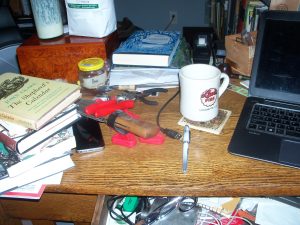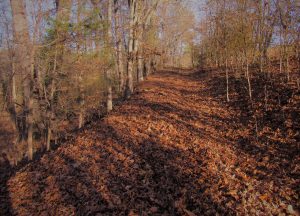
A lane in our woods.
The sun hovers on the western horizon, an hour left on its time clock, as I walk out the back door and up the wooded lane beyond the pasture gates. The walk is quiet, muffled by deep leaves of countless seasons on this land. My destination, as it often is, a pile of boulders at the base of a half-dozen oaks. I climb onto the largest and use a smaller, four-foot stone as a footrest.
A cairn of rocks six feet tall and 20 across lies at the edge of the pasture. Another stands illuminated across the field like a treasure hoard in the curious light of a low sun through a leafless deciduous forest in November. The rocky groupings are seated on the sidelines of all our pastures. They are hard evidence of generations of boys who spent their youth in farm chores, among them, picking up the endlessly erupting rocks and stacking them in mounds.
Behind me lie two oaks felled by storms decades past and decades apart, one now nearly buried in leaf litter, its long cycle of decay almost complete. Ten yards away a limb as big around as my waist dangles 40 feet up. Broken off from a parent white oak, it hangs like Damocles’ sword above we mortals who dare imagine the world as our throne.
The sound of Cedar Creek is barely audible as it channels under the bridge at Possum Trot. Another quarter-mile and it will narrow at the decaying Cook’s Mill, where elder neighbors recall as children hauling mule-driven wagonloads of corn for milling.
A leaf spirals into my view, released from a seasonal contract to land at the foot of a massive shagbark hickory. Nearby, a deep-rooted sourwood, contorted in the last ice storm, refuses to submit to gravity. At its base a large stone is covered with the debauched remains of a dinner by the resident squirrels: bits of hickory and acorns piled in the center of the table.
A small flock of wild turkeys, feeling safe a couple of days after Thanksgiving, ambles across a lower pasture and enters my wood. On the far side of the road beyond lies the expanse of pastures that marks our neighbor’s cattle farm. From there comes the nervous bawling of dozens of cows, as they discover their new home after an auction in a nearby town.
Their disquiet competes with the sound of distant chainsaws from all points of the compass, chewing on wood. And then, unexpectedly, another intrusion. A neighbor beyond the eastern ridge and half a mile away fires up his ATV to begin what is an early start to his habitual late-night motorized rambles.
Toward the house, I can just hear Cindy in the woods as she clangs the lid off the feed barrel. An overeager hog squeals as he hits the single strand of hot wire. I smile: I can check the task of determining if the current is pulsing off my to-do list for the next day.
I rise from my perch and head home. Not down the lane, but at an angle that leads me into the heart of the woods. I note a likely Charlie Brown Christmas tree along the way. I then pause, as is my wont, at the base of a sentinel white oak. Its circumference is all of 15 feet, its trunk reaches 40 straight feet before the first branches erupt, and the fissures in the bark are two inches deep. I lay hands on it, hoping to receive a blessing of sorts.
Now, on the edge of the main woods, I traverse a pig paddock not in use. In the middle is a tall pile of fallen limbs. It provides a sometime shelter for the hogs and, more often, a haven for the red fox that ventures out to make raids on errant hens.
By the time I exit the woods, Cindy is trudging up the drive in her bee suit, fresh from checking that her charges are well-fed and secured for the cool night to come.
The sun has set, the light fades, and I head into the house, pleased to call it another good day.
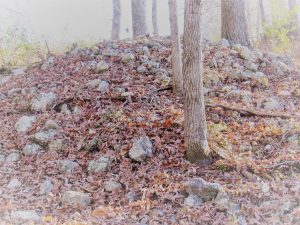
rock cairn
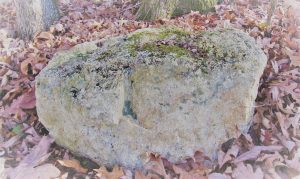
the dining table
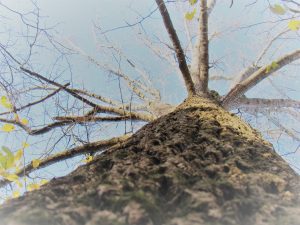
The old oak.
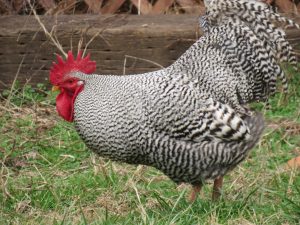
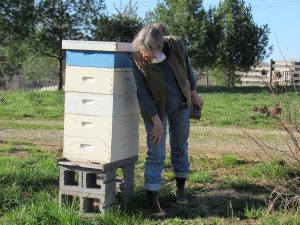
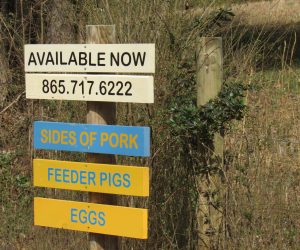
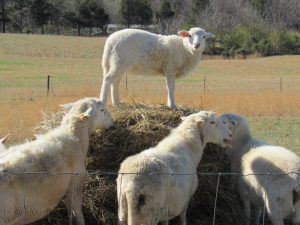
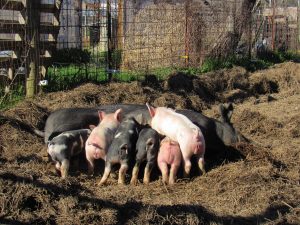
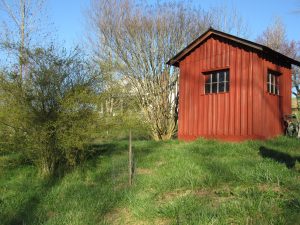

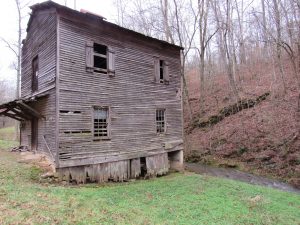
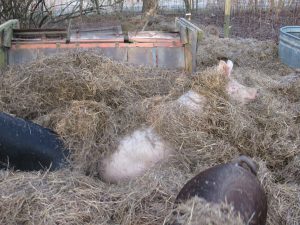
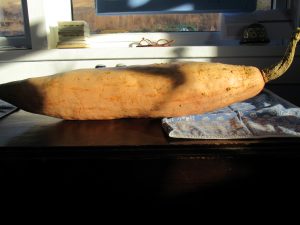
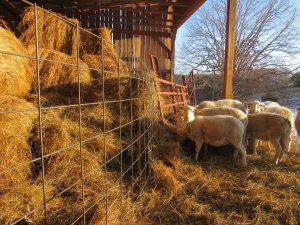
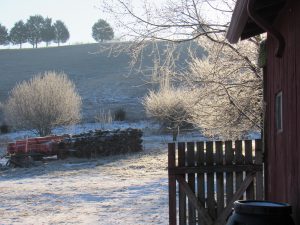
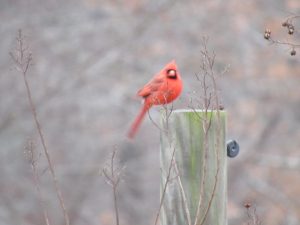 The first of the new crop of lambs, confident and healthy.
The first of the new crop of lambs, confident and healthy.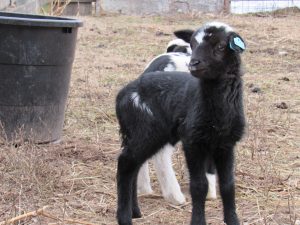
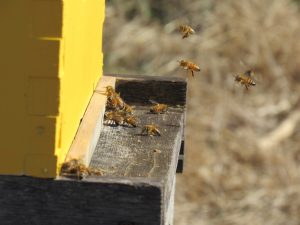




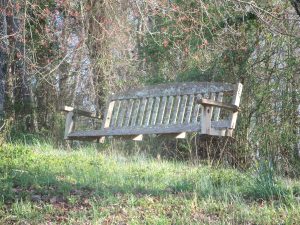 turned in welcome to the colder climes. The deep mysteries of the night office now wane with the promise of the sun.
turned in welcome to the colder climes. The deep mysteries of the night office now wane with the promise of the sun.